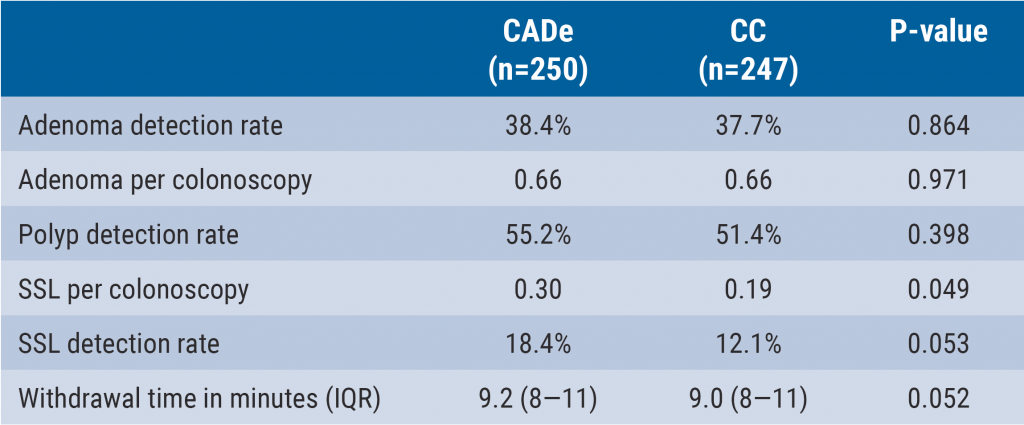https://doi.org/10.55788/f7ba0cf5
Resmetirom is an investigational, liver-targeted thyroid hormone receptor-β (THR-β) agonist. In a phase 2 trial, this agent showed promising activity in participants with NASH and fibrosis [1]. Building on these findings, the double-blind, placebo-controlled, phase 3 MAESTRO-NASH trial (NCT03900429) randomised adult participants with biopsy-confirmed NASH and fibrosis (n=966) in a 1:1:1 ratio to 3 groups: placebo, resmetirom 100 mg, or resmetirom 80 mg, once daily [2].
Prof. Jörn Schattenberg (University Medical Center Mainz, Germany) mentioned that participants needed to have at least 3 metabolic risk factors and ≥8% hepatic fat measured by magnetic resonance imaging-proton density fat fraction to be eligible for the study. The dual primary endpoint at week 52 was NASH resolution with no worsening of fibrosis or ≥1-stage improvement in fibrosis with no worsening in the non-alcoholic fatty liver disease (NALFD) activity score. According to Prof. Schattenberg, about 60% of the participants had type 3 fibrosis, and around 14% and 47% were on baseline GLP-1 receptor agonists and/or statins, respectively. Prof. Schattenberg presented the primary findings of the trial at 52 weeks.
Both the 80 mg and the 100 mg arms significantly outperformed the placebo arm in terms of NASH resolution, with 26% and 30% of the participants achieving this endpoint in the active arms compared with 10% of the participants in the latter arm (P<0.0001 for both). Similarly, a significantly larger proportion of participants in the resmetirom arms reached ≥1-stage improvement in fibrosis, with 24% in the 80 mg arm (P=0.0002) and 26% in the 100 mg arm (P<0.0001), compared with 14% of patients in the placebo arm. Prof. Schattenberg added that participants in the 80 and 100 mg arms had a mean percentage change in low-density lipoprotein (LDL) cholesterol of -14% and -16%, respectively, whereas this change was 0% in participants on placebo (see Figure).
Figure: Dual primary endpoints and key secondary endpoint at week 52

NASH, non-alcoholic steatohaepatitis; LDL, low-density lipoprotein.
The safety profile did not show any concerns. Prof. Schattenberg mentioned that the treatment-emergent adverse event-related discontinuation rate was somewhat higher in the 100 mg arm (6.8%) compared with the 80 mg arm (1.9%) or the placebo arm (2.5%), but this trend was only visible during the first 12 weeks of the study. Diarrhoea (30%) and nausea (20%) were the most common treatment-emergent adverse events in the active arms.
In conclusion, these results from the MAESTRO-NASH trial support resmetirom as a potential treatment for patients with NASH.
- Harrison SA, et al. Lancet. 2019;394(10213):2012–2024.
- Schattenberg J, et al. A randomized controlled phase 3 trial of resmetirom in nonalcoholic steatohepatitis: 52-week data from MAESTRO-NASH. OP001, UEG Week 2023, 14–17 October, Copenhagen, Denmark.
Copyright ©2023 Medicom Medical Publishers
Posted on
Previous Article
« Apraglutide: Advancing the treatment of short bowel syndrome Next Article
GastroGPT: Successful proof-of-concept study of gastroenterology-specific large language model »
« Apraglutide: Advancing the treatment of short bowel syndrome Next Article
GastroGPT: Successful proof-of-concept study of gastroenterology-specific large language model »
Table of Contents: UEGW 2023
Featured articles
SEQUENCE: Risankizumab doubles endoscopic remission rates compared with ustekinumab in CD
What’s New in Artificial Intelligence
Digital intervention relieves symptoms and improves QoL in IBS
GastroGPT: Successful proof-of-concept study of gastroenterology-specific large language model
Other Therapeutics and Outcomes
Primary results from MAESTRO-NASH trial: resmetirom efficacious for NASH
Apraglutide: Advancing the treatment of short bowel syndrome
Endobiliary radiofrequency ablation in pCCA: a pilot study
Raising awareness for microscopic colitis: disease course and predictors
Outcomes of IBD Trials
DIVERSITY1: Filgotinib results in Crohn’s disease leave investigators puzzled
SEQUENCE: Risankizumab doubles endoscopic remission rates compared with ustekinumab in CD
Guselkumab provides benefits in UC regardless of advanced therapy history
INSPIRE: Risankizumab meets all efficacy endpoints in UC
Risankizumab resolves extraintestinal manifestations in CD
Obefazimod takes the spotlight as promising UC treatment
Rapid response to upadacitinib boosts outcomes in severe Crohn’s disease
LUCENT trials: Mirikizumab works in UC, regardless of targeted therapy history
ARTEMIS-UC: New kid in town for UC
Breakthroughs in Colorectal Lesions
Safer removal of large polyps with cold snare technique
Higher recurrence rates with cold snare EMR than with conventional EMR
How to deal with at-risk patients above the CRC screening age limit?
European CRC screening needs to be revised
Advances in Upper Endoscopy and Colonoscopy
Epinephrine boosts efficiency in gastric ESD
Artificial intelligence-aided colonoscopy did not improve outcomes in Lynch syndrome
Can computer technology improve our everyday colonoscopy results?
Is AI-assisted colonoscopy ready for clinical practice?
Should we use E-SEMS or EVT for traumatic oesophageal perforations?
Related Articles
December 7, 2023
Is AI-assisted colonoscopy ready for clinical practice?

December 7, 2023
Can computer technology improve our everyday colonoscopy results?
© 2024 Medicom Medical Publishers. All rights reserved. Terms and Conditions | Privacy Policy
HEAD OFFICE
Laarderhoogtweg 25
1101 EB Amsterdam
The Netherlands
T: +31 85 4012 560
E: publishers@medicom-publishers.com

